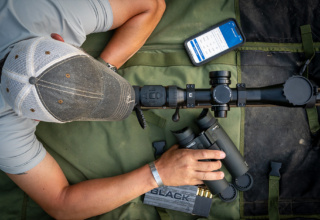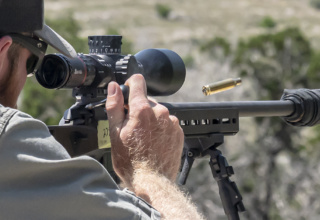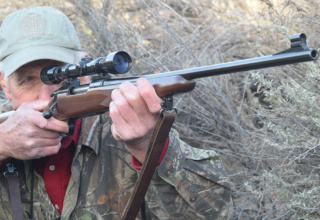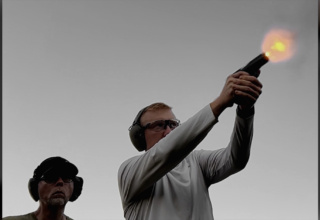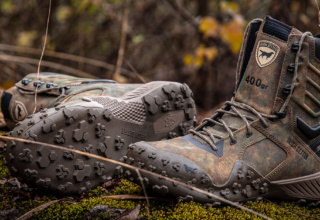Like muscle cars, magnums once wowed shooters. The upsizing of long-range rounds threatens a repeat!
by Wayne van Zwoll
The sun teetered on badland buttes to the west. A whitetail doe jetted from the tangled hem of the timbered Dakota bottom. Still-hunting toward it off a hill far downwind, surely I hadn’t bumped her…
Seconds later a fine buck, neck thick, nose forward, galloped from the shadows in pursuit.
I wouldn’t have much time. Beyond a thin scattering of anemic cedars, I bellied short yards closer in shin-high grass. Meanwhile, the deer slipped in and out of brush fronting creek-side oaks.

The doe stopped, mostly hidden in a head-high thicket, and stared behind her. Slinged up prone, rifle barely high enough to clear the grass, I found a slot. The buck entered it at a trot. “Hey,” I said, just loud enough to carry. He braked, then disappeared in recoil. A solid “thwuck” came back.
There’s no magic in a 140-grain softpoint from a 6.5 Creedmoor cleanly taking a buck. The bullet had landed where intended and performed as engineered. At 220 yards, the shot didn’t stretch this load. It had killed bigger game for me at greater range.
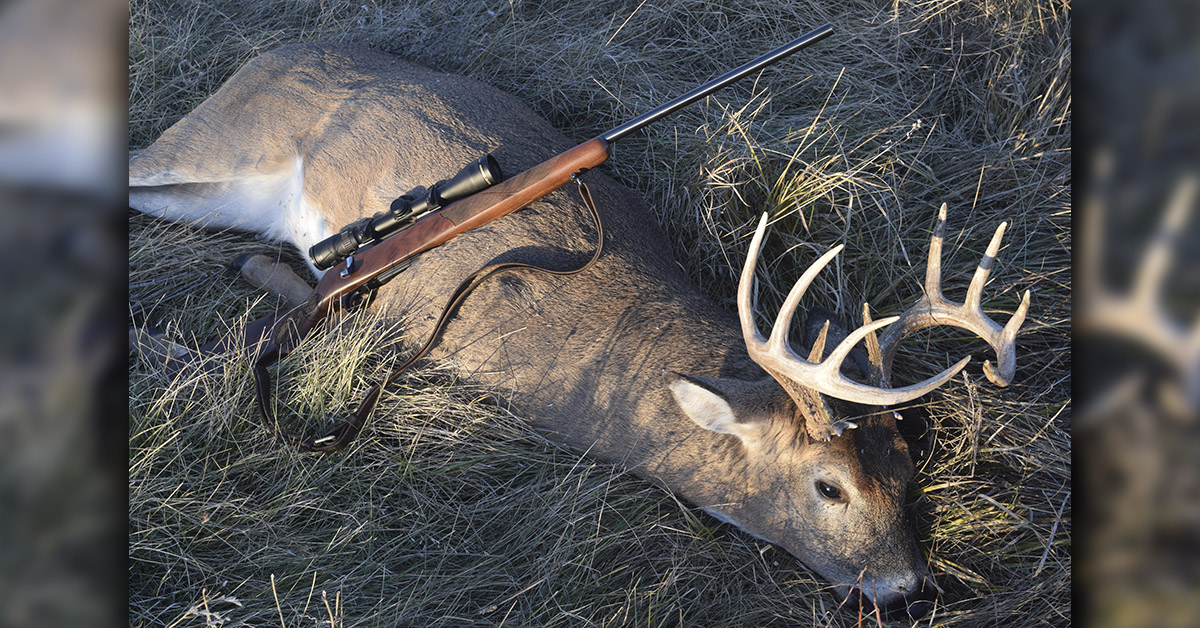
While the hunting credentials of the gentle, efficient 6.5 Cm have been honestly earned and well documented, those of frothy follow-ons are less certain. The 6.5 PRC and 6.8 Western, the 28 Nosler and 7mm and .300 PRCs promise flatter arcs, less wind-drift. So, they appeal to shooters assaulting steel plates out yonder. But long-range buzz in hunting circles brings to mind the belted-magnum hype of my youth.
In 1956, Winchester had announced its .458 Magnum, first of a generation of cartridges then called short magnums. They were based on the 2.85-inch belted case London’s Holland and Holland had fielded in 1912 and necked from .375 to form the .300 H&H. Stubbed to 2.50 inches and pushed out at the shoulder to reduce taper and hike capacity, cartridges of this new clan fit .30-06-length actions —common, affordable mechanisms. Their .532 head was a step up from the .473 head of the .30-06 and kin, but bolt faces were easy to re-engineer or modify.
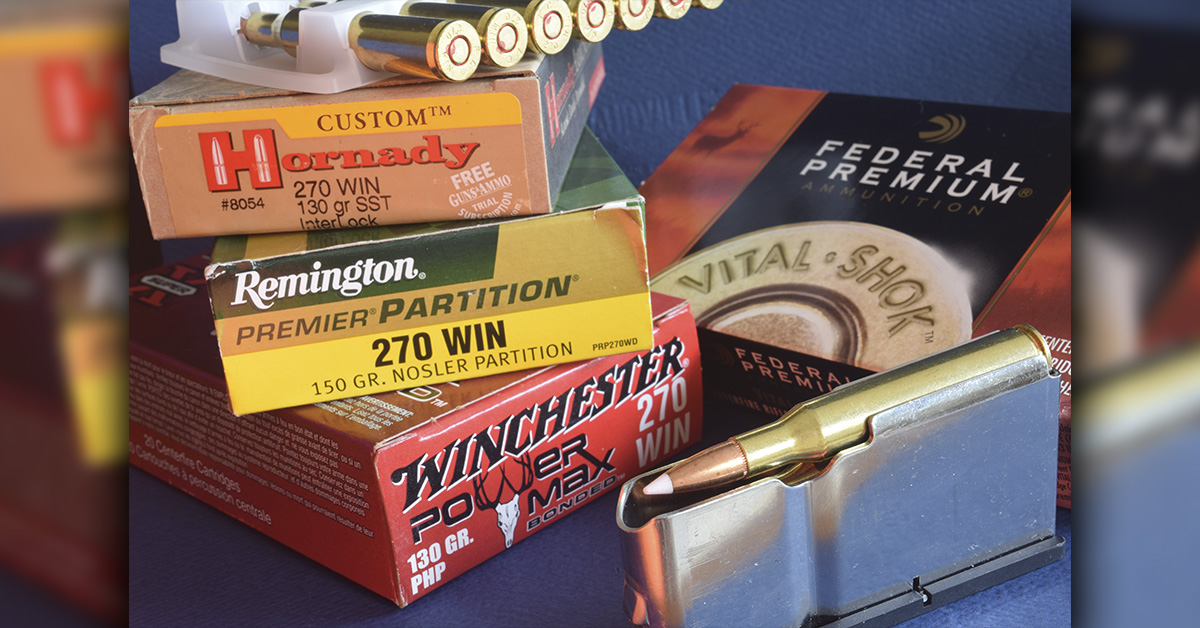
The .458, first chambered in Winchester’s Model 70, seemed an odd standard-bearer. How many hunters probed prairie and woodlot for elephants — or, in the late ’50s, would pay $310 for a bolt rifle? In short order, it begat the .264 and .338 Winchester Magnums. More useful, if not brilliantly marketed, they bracketed the most logical bullet diameters. In 1962, Remington announced its 7mm Magnum. Winchester countered the next year with its .300 Magnum. Both were destined for greatness.
At the turn of the last century, another tribe of short magnums appeared, many on a re-configured .404 Jeffery case. Winchester Short Magnums (WSMs), Remington Short-Action Ultra Mags (SAUMs), and Ruger Compact Magnums (RCMs), with like offerings by Lazzeroni and wildcatters, have cases 2.01 to 2.10 inches long, to fit actions designed for the .308 Winchester. These large-diameter, belt-free hulls, most with .534 bases, hold about as much powder as their belted cousins, with performance to match.
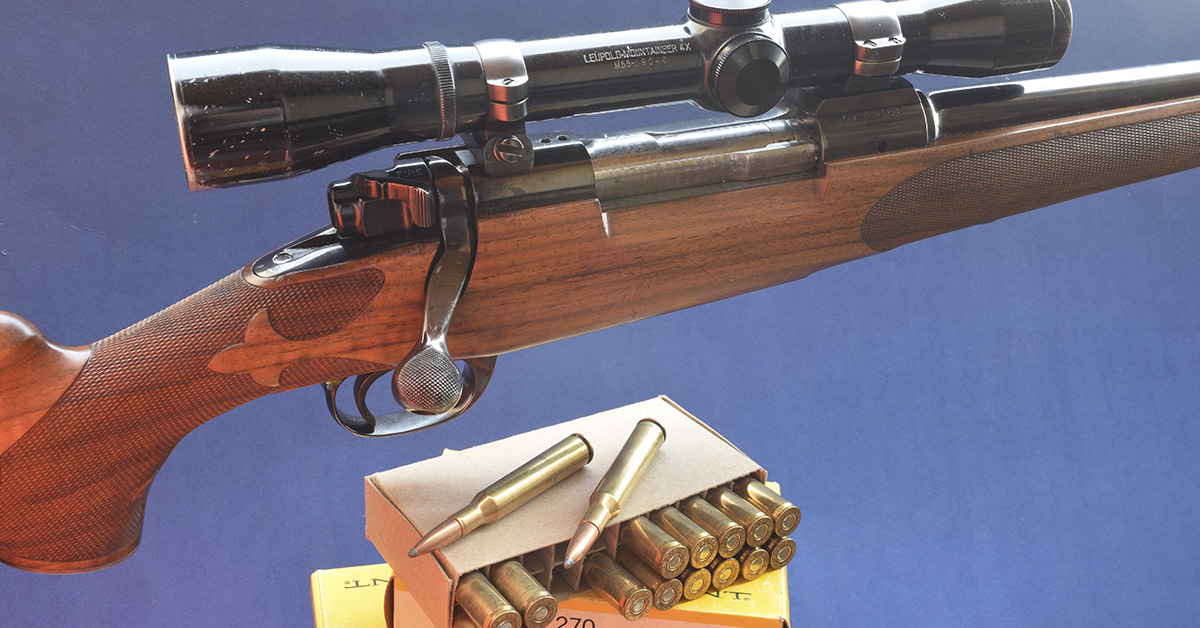
Pleased by the reception of WSMs, Winchester followed with Super Short Magnums, evidently hoping prospective customers wouldn’t think them an answer to a question no one had asked.
Meanwhile, hunters who’d teethed on the .30-06 and .270, and the shorter .308 and 7mm-08, kept killing game without complaint. Ammo-makers also continued to load 19th-century stalwarts: the 6.5×55, 7×57, .30-40 Krag, .303 British. The .30-30 and other saddle-gun champs trundled happily on in whitetail coverts.

Belted magnums and short rimless magnums were irresistible to hunters craving power and reach. With changes in case design, and new bullets, they became today’s long-range wonders. Their steel-target stardom soon turned talk in hunting camps to fast-twist rifling and scopes with Bluetooth brains.
Who wouldn’t want to kill game once out of reach?
Alas, hunters freshly in debt for long-range hardware may still find that game too far. Few missed shots and crippling hits are caused by the rifle, or by its load or sight. While long, pointed bullets that scribe flat arcs make hits easier at greater distance and bring more energy, the shooter still determines where his or her bullets land!

Last year, I benched a rifle that shot into 3/8-inch, in gusts that jostled the crosswire that much. I had planned to take it deer hunting but found to my dismay it didn’t accept traditional QD sling swivels. As it denied me use of my beloved Latigo sling, I palmed this prima donna off to a friend. The deer it took on a whitetail runway could have been killed as handily with a shotgun slug.
Lest you think I blaspheme one-hole accuracy or rifle designs post-dating PayPal, I work hard to wring tight groups from every rifle crossing my path, and treat with compassion any denied basic features like swivel studs. But without a sling, I’d not have fired at the buck that fell to my 6.5 Cm. At 220 yards the reticle would have bobbed uncontrollably about the ribs.

The long-range rifle and its fresh flock of Pinocchio-nosed cartridges enchant hunters as well as distance nerds who hear the “thwock” of bullets striking steel in their sleep. I too find the wiggle of a tiny plate, gray in horizon’s haze, most alluring. Predictably, though, long-range rifles and loads are becoming ever more specialized, straying from their sporting-rifle roots — as rifles and loads for Metallic Silhouette matches did during the 1970s. With a .270 and hunting ammo under a 6x scope, I managed to place in the first Silhouette match I entered. That shoot was won by a stump-statured fellow with a Winchester Model 70 .30-06 wearing a Weaver K4. Not long thereafter, everyone was firing match loads from tuned .308s with beefy barrels under 20x target scopes, and triggers that tripped if a pretty lass walked by.
So much for the notion of friendly contests among common folk with ordinary deer rifles.

A friend recently bought an expensive long-range rifle in 7mm PRC. She hunted with it and shot a moose. While the cartridge is trendy, and her rifle accurate, I believe she’d have been as well outfitted and at least as comfortable on the trail with a light sporter of traditional form and chambering — perhaps a 7mm-08 or a .280.
A long-range rifle can open a new sport to you, bring you into good company and improve your shooting skills. Bravo! And now rifles of field-worthy form are bored for the PRCs and other long-range cartridges. But matches are still won with marksmanship. And a top-end long-range rifle is no more effective than a mid-priced sporter in most hunting country.

Even accoutrements have become task-specific. The bipod standard on rifles for cross-township shots can’t help you carry the rifle. In cover, it often adds pings and clacks to the sound of your step. Its bulk and profile can impede handling. A bipod won’t adapt quickly and quietly to steady your aim from a hillside scramble. So, ARCA and Picatinny rails are poor substitutes for swivel studs on hunting rifles.
Carbon-fiber (CF) stocks and barrels have bled ounces from rifles without impairing their rigidity or accuracy. The rounded adjustable combs of rifles built to hit out yonder baby your face in recoil. Still, the thick, near-vertical grips on such rifles do little to mitigate kick. Besides being slow to point, they beg an open trigger hand that pulls your palm from the tang, where it might otherwise help absorb recoil.

Ah, recoil. This gremlin is under-rated as it affects field accuracy. To make a good shot, you and the rifle must work as one. If in any way the rifle is your adversary, to be feared, tamed or endured, you’ll anticipate its violence and flinch. As with snoring, flinching often goes unnoticed by the person doing it.
Here are three arbitrary levels of recoil for popular cartridges firing 6mm to 8mm (.243 to .323) bullets. Note that powerful 7mms and .300s crowd the “stiff recoil” roster.
Mild: Cartridges with recoil energy of 11 to 15 ft-lbs in 7 ½- to 8-pound rifles
Cartridge / Bullet wt. (grs.) / Velocity (fps)
- .243 Win. / 95 / 3,100
- 6mm Creedmoor / 103 / 3,050
- .25-06 Rem. / 120 / 3,000
- .260 Rem. / 120 / 2,860
- 6.5 Creedmoor / 140 / 2,700
- 7×57 Mauser / 145 / 2,660
- 7mm-08 Rem. / 150 / 2,750
- .30-30 / 170 / 2,200
Tolerable: Cartridges with recoil energy of 16 to 22 ft-lbs in 7 ½- to 8-pound rifles
Cartridge / Bullet wt. (grs.) / Velocity (fps)
- 6.5 PRC / 143 / 2,960
- .264 Win. Mag. / 140 / 3,100
- .270 Win. / 140 / 3,060
- .280 Rem. / 150 / 2,900
- 7mm SAUM / 160 / 2,900
- .308 Win. / 165 / 2,700
- .30-06 Spfld. / 180 / 2,700
- 8×57 JS Mauser / 195 / 2,500
Stiff: Cartridges with recoil energy of 23 to 28 ft-lbs in 7 ½- to 8-pound rifles
Cartridge / Bullet wt. (grs.) / Velocity (fps)
- 7mm Rem. Mag. / 160 / 3,000
- 7mm WSM / 162 / 3,000
- 7mm PRC / 160 / 3,000
- 28 Nosler / 162 / 3,150
- .300 SAUM / 180 / 2,960
- .300 WSM / 180 / 2,970
- .300 PRC / 190 / 3,000
- .300 Win. Mag. / 200 / 2,860

Muzzle brakes attenuate recoil, so long-range rifles often feature them. But ear protection isn’t as convenient afield as at matches. Muffs like Walker’s Game Ear block sudden blasts but allow you to hear tiny natural sounds that can clue you to game. As many of my game animals, deer to Cape buffalo, have been taken prone, I’m acutely aware of the dust and snow that can erupt in front of a braked rifle, erasing the target image. Also, a brake increases barrel length a couple of inches without boosting bullet velocity. Easily removable brakes can be used at the range, then replaced with a short, unvented sleeve for hunting.
Suppressors are a blessing at the range and afield, reducing noise and recoil without lifting debris. Liabilities? Their cost, plus a stiff tax, and the inches of canister they add to the muzzle. Still, most barrels on centerfire rifles are threaded for them, and they’re increasingly popular among hunters stateside.

Rifling twist is a component of rifle design long ignored by hunters, who thought — rightly — that manufacturers knew which twist rates worked best. Now, many hunters have rifles built, or re-fitted, with barrels of their specification. The long, streamlined bullets for which the Creedmoors, PRCs, and similar short-bodied cartridges were developed fly most accurately from rifling with steep twist. Giddy spin rates may not favor traditional game bullets. Here’s how twist for long-range cartridges (italic) compares with standard twist for familiar hunting cartridges:
Cartridge / Standard or recommended twist rate (inches of forward travel per rotation)
.243 Win. / 1 turn in 10 inches
- 6mm Cm / 1-in-7.7 or 1-in-8
- .260 Rem. / 1-in-9
- 6.5 Cm / 1-in-8 or 1-in-9
- .264 Win. Mag. / 1-in-9
- 6.5 PRC / 1-in-7 (Browning), 1-in-7.5, or 1-in-8
- 7mm Rem. Mag. / 1-in-9.5
- 7mm PRC / 1-in-8
- .300 Win. Mag. / 1-in-10
- .300 PRC / 1-in-8.5 or 1-in-9

A final caveat before you replace Lucretia Borgia with a long-range rifle: Unless you’re using a .369 Purdey to hunt deer, ammunition to feed a long-range rifle will cost more than you’re paying now. And you’ll have fewer options in bullet weights and types, probably from fewer ammo makers — which can mean less availability when supplies shrink. Less shooting is no path to better marksmanship!

A scan of MidwayUSA’s extensive ammunition list shows .243, .25-06, .270, 7mm-08, .308, .30-06, and other popular cartridges with Hornady’s ELD-X bullets in its Professional Hunter loads at about $45 a box. PH ammo for the 6.5 PRC, 7mm PRC, and .300 PRC fetches $52, $55 and $57, respectively. In 7mm Rem. Magnum and .300 Win. Magnum, the PH offerings run $58 to $63. Hornady’s Outfitter loads for popular Weatherby Magnums come in around $74. Of course, uncommon and outsize cartridges cost more.
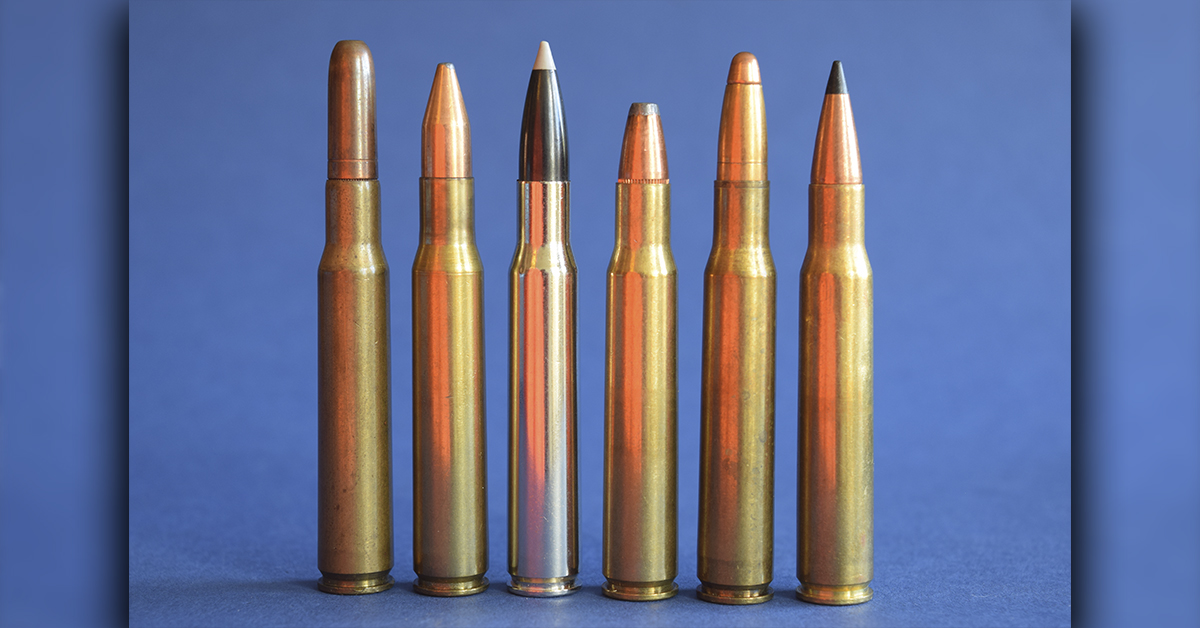
While a rifle that helps you ring steel at four-figure distance can ably take game, its heady reach comes at costs some hunters overlook — not just in dollars, but in comfort on the carry, speed in handling, and field accuracy. How well a hunting rifle helps you quickly hit vitals from improvised positions is still a good measure of its utility!


